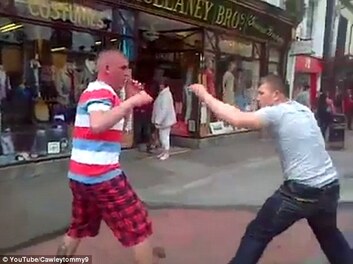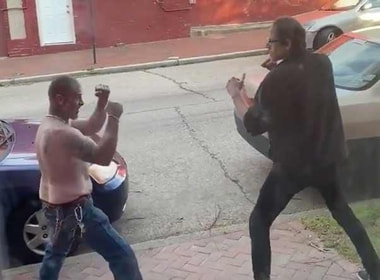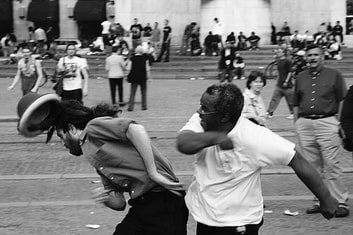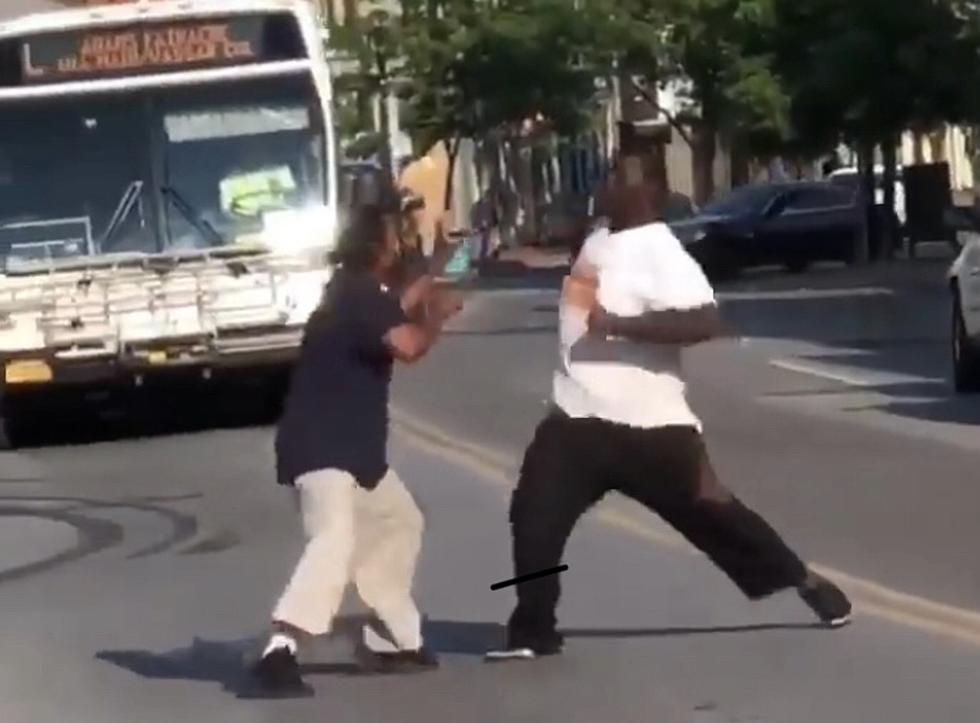Of course, the martial artists I'm referring to don't ever seem to put their own arguments in such a succinct package themselves. In their arguments the logic is such that it is made to appear that the system they are training is not only necessary and sufficient for addressing all possible use of force scenarios that are likely to happen - but preferred. And, when pinned into a corner by logical argument that threatens their beliefs, they defer to what they claim to be infinitesimal odds and incredibly rare likelihoods on how any person would ever actually be put in to such violent predicaments in real life. To be fair, this convolution of logic isn't usually intentional. It seems to be a cognitive bias known as the Confirmation Bias and possibly a touch of the Self-Serving Bias. After all, the more of your time, your money and your life that you've sunk in to believing a certain philosophy, the less likely you will be to give it up or change it. Humans are both risk and loss averse. Changing a belief takes courage. The Ego is the gate keeper, and it requires great strength to open that gate, because, the Ego absolutely hates to lose. Am I also susceptible to a convolution of logic in my own right? Of course I am. However, I believe that the argument I make yields to the side of caution. I acknowledge the realities of criminal assault and the requirements of real self-defense events based not only on my own personal experience - but that of others who have told their stories to me, that of what's known about by experts as to how criminal assaults transpire, and that which is published in the academic literature.
The Key Component to All Street Fights When many martial arts instructors speak of street fighting and self-defense, they do so interchangeably. This is an all too common and yet an incredibly dangerous misuse of terms. The key component to ALL street fights is that they are ALWAYS avoidable. In contrast, a true self-defense event where one must use force to defend themselves is UNAVOIDABLE by a reasonable person.
How to Actually Prevail In a Street Fight
Rule #1: Don't get into street fights. Street fights can be avoided, so don't waste your time or money attempting to learn or be instructed as how to "win" a street fight. People who try to make money off of offering such advice as how to win street fights are charlatans and swindlers. Avoid them and you'll save lots of money, pain and time spent in places you'd rather not be. That said, a person who has experience in fighting because of their job as a bouncer, security guard or police officer, may have real legitimate advice to offer for the situations they were put in. But, unless you're in one of their occupations and put in a similar situation, their advice for you as a standard civilian may have little to no practical use for you. Just because a trainer/instructor has a laundry list of validated credentials and real world experiences, doesn't make them a good instructor who is capable of teaching what's relevant to you in an effective way. The ability to teach, train and coach effectively to a broad audience, and to do so such that it enhances both knowledge and performance of the recipients of the training is akin to being an alien from another planet that is capable of living on Earth. Which means, it's rare that people can teach, train and coach at a high level - even in the field that they excel in as a performer/athlete. Cutting to the chase, just because there's credentials or even a pedigree for an instructor, doesn't mean they can teach or coach worth a damn. Having to Fight vs. Wanting to Fight This is a tough one for those who are competitive and/or have training in the combat arts. It's a lesson that was first wonderfully illustrated to me by an amazing instructor - Chris Fry who runs MDTS Training. But, it's a lesson which, I've seen so many highly trained Jiu-Jitsukas and other martial artists fail so miserably at in real life. Sometimes, you just want to see what you're capable of. Sometimes you just want to unleash all your training on an adversary who seems to be so deserving of a thumping. But, there is a HUGE difference between HAVING to use physical force to DEFEND yourself, versus WANTING to use force against a "deserving" assailant. Worse yet is the possibility that you egg-on or entice the other party into a fight which you otherwise could've easily avoided and walked away from. Do yourself a favor and walk away from every one of these scenarios that you possibly can. Avoid them all because none of them matter. If you want to see how well your training has prepared you - GO COMPETE! That's what competitions are there for. Compete in tournaments, in boxing and muay thai smokers, in MMA matches and any number of other specialized events. It's all out there. Google it. Train for it. Compete in it - and stay out of prison/hospital/the morgue. If You Cannot Avoid The Street Fight - What Do You Do? If you are unable to avoid being in a fight, as in - you are not able to leave without serious harm to yourself or another, it is likely you are being criminally assaulted and have legal justification to defend yourself with reasonable force. In some jurisdictions you must be able to explain how you attempted to avoid having to use such force (duty to retreat). In other jurisdictions you do not (stand your ground and castle doctrine). It is to your benefit to learn the laws of your jurisdiction. At Close Range Tactics we teach our students and clients the law regarding self-defense and judicious use of force. Regardless of the specifics of your jurisdiction, the better you are able to articulate why you used force when you did, and why you used the level of force that you did, will be of a monumental benefit to your legal use of self-defense claim that 99.999% of all martial arts academies who claim to teach self-defense DO NOT take into consideration when teaching their clientele. Conclusion Street fights are ultimately always avoidable. Therefore, they should never be used as an example of, evidence of, or validation of a martial concept that is not appropriately addressing the realities of a modern criminal assault - which is unavoidable. Any martial arts or defensive tactics instructor that speaks of street fighting effectiveness or relevancy of their techniques, but which is not also addressing what is known about the modern criminal assault, is uneducated on the topic and should not be teaching techniques under the guise of them being effective for a modern self-defense scenario. To train under such ignorance is to set yourself up to either go to prison or to the morgue. It's possible to do better than this, and at Close Range Tactics we are able to do much better than the standard martial arts academy or YouTube Tactical Street Self-Defense Expert. In our weekly class we teach our student body a skill set that encompasses soft skills of avoidance and deescalation all the way through the force continuum of having to grapple, strike, and use defensive tools to protect themselves. At every step along the way we teach in regards to common and local use of force laws. Close Range Tactics is available for corporate, group and private training sessions in both armed and unarmed self-defense tactics. Please contact us with your inquires and we will design a training package unique to your training needs.
0 Comments
Leave a Reply. |
AuthorWrite something about yourself. No need to be fancy, just an overview. Archives
January 2022
Categories
All
|






 RSS Feed
RSS Feed

